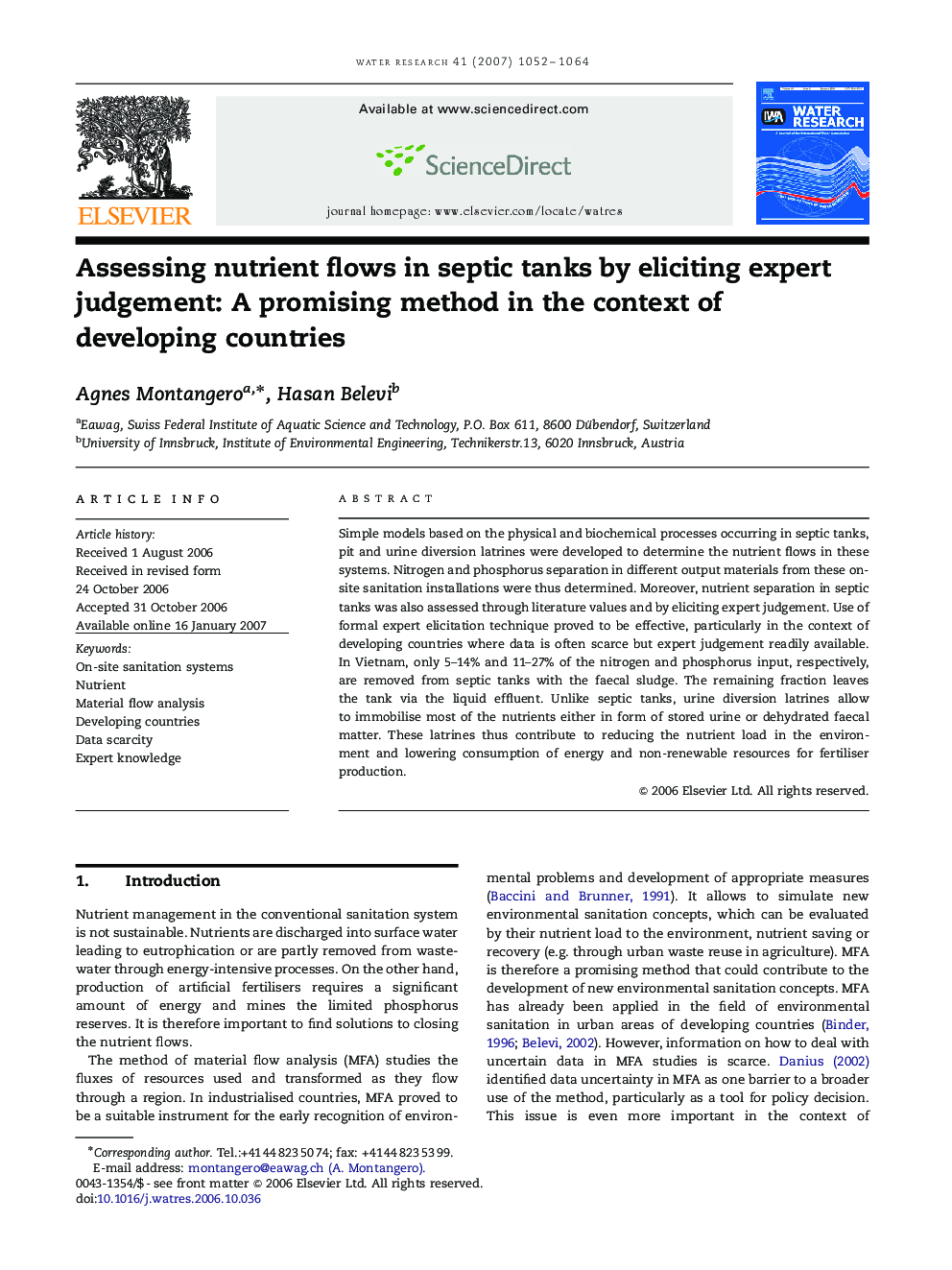| Article ID | Journal | Published Year | Pages | File Type |
|---|---|---|---|---|
| 4486625 | Water Research | 2007 | 13 Pages |
Simple models based on the physical and biochemical processes occurring in septic tanks, pit and urine diversion latrines were developed to determine the nutrient flows in these systems. Nitrogen and phosphorus separation in different output materials from these on-site sanitation installations were thus determined. Moreover, nutrient separation in septic tanks was also assessed through literature values and by eliciting expert judgement. Use of formal expert elicitation technique proved to be effective, particularly in the context of developing countries where data is often scarce but expert judgement readily available. In Vietnam, only 5–14% and 11–27% of the nitrogen and phosphorus input, respectively, are removed from septic tanks with the faecal sludge. The remaining fraction leaves the tank via the liquid effluent. Unlike septic tanks, urine diversion latrines allow to immobilise most of the nutrients either in form of stored urine or dehydrated faecal matter. These latrines thus contribute to reducing the nutrient load in the environment and lowering consumption of energy and non-renewable resources for fertiliser production.
